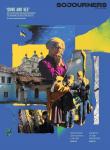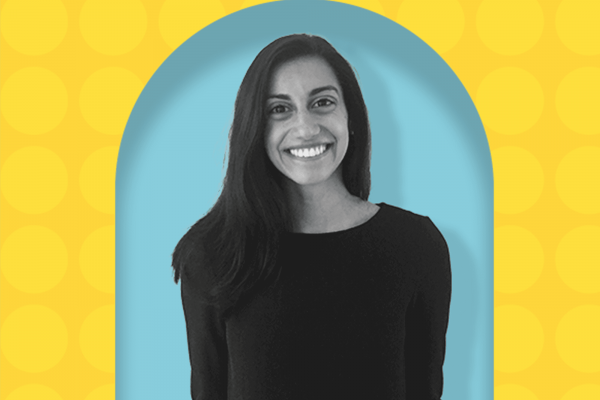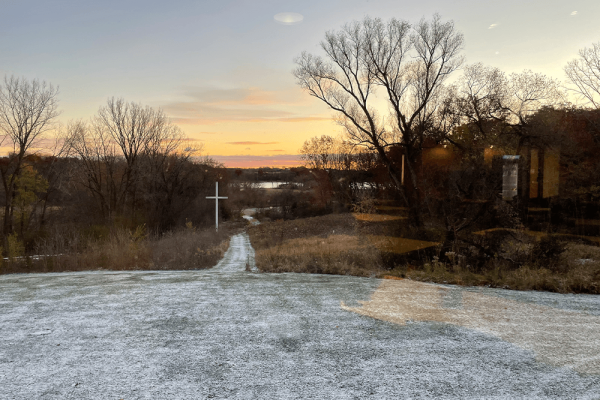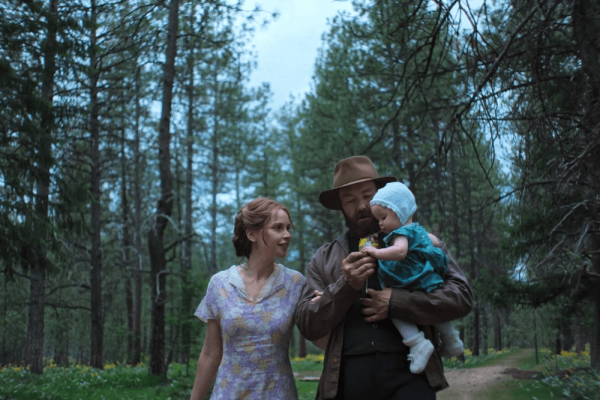IN THE SEPTEMBER/OCTOBER issue of Sojourners, culture columnist Sarah James explores how visio divina (“divine seeing”) allows us to seek God’s wisdom with soft hearts. Editorial assistant Liz Bierly spoke with James about how her identity influences her writing and the place that has shaped her faith. You can read her column, “Seeking God’s Wisdom Through ‘Visio Divina’,” here.
This interview has been edited for length and clarity.
Liz Bierly, Sojourners: Writing and education have been two of your largest commitments in your career. What drew you toward those spaces, and what do you bring to your pages while writing?
Sarah James: I come from a long line of teachers. In my view, education is a rich space for formation, discovery, critical thinking, and meaning-making. As a student at Middlebury College, I majored in English and American Literatures, which nurtured my love for narrative, critical theory, and finding connections between the humanities and community work. In the fall, I’m planning to begin doctoral work in peace education and the arts to explore the relationships between identity formation, public memory, and peacebuilding.
I grew up in a homogenous pocket of the Midwest in a bicultural, biracial family. My identity has been profoundly influenced by dwelling in the “in-between,” which is a gift. My positionality and my educational experiences have taught me how to refine my quality of attention, how to know and not know, and how to ask better questions. I hope that I—being biracial, a person of faith, a feminist, a writer, and an editor—bring a perspective steeped in curiosity and humility to the page.
You founded Clerestory Magazine amid the first few months of the pandemic. What led you to create that space, and how does it allow stories to serve as windows “through which the pain and beauty of the human experience shine?” The early days of the pandemic were painful and disorienting. The same week of the first stay-at-home order, we learned my mother-in-law's cancer was terminal. As the months unfolded in grief, I kept contemplating the role of writing in community and in helping us feel less alone. I wanted to create a fresh space for stories on wisdom, culture, and justice that seek to make our world more humane. In curating this space, I have come to believe that sharing beauty, in and of itself, is healing, too.
A “clerestory” is a window that allows light and air into the upper body of a cathedral. Stories, like fresh air and light streaming in, can enliven our ways of knowing and being. By making space within ourselves to receive the lived experiences and perspectives of others, we can learn to see ourselves and each other with deeper compassion. As the editor, I strive to share the work of a diverse cross-section of humanity, collaborating with BIPOC, incarcerated, immigrant and refugee, international, and LGBTQIA+ writers and artists on a regular basis. Are we paying attention? Are we listening? Are we taking right action? These are key questions for our community.
How, if at all, does your faith background inform your writing, and what do you hope readers glean from your columns? I was raised in Catholicism, but I no longer identify as Catholic. The faith context of my childhood was rigid and patriarchal. My discontent with the sexism of the church, though, shaped my commitment to feminist advocacy and progressive politics from an early age. When, years later, I found myself at divinity school, I felt unmoored. I couldn’t answer the simple question, “What is your denomination?” To sort through all this and more, I turned to writing.
Writing on the train home every night became a discipline of finding the edges of my heart and the connections between faith and life. Today, I find solace and inspiration in the Christian contemplative tradition: New (old) ways of embodying Christian wisdom that influence my work and writing. I hope my column inspires readers to find sources of wisdom in art and culture that enrich their faith and offer moments of calm in this tumultuous time.
What is one place that has shaped your faith? A few years ago, I visited Tintern Abbey in Wales on a gray, foggy day in November. Walking through the ruins of the abbey, tracing the lines of the old hospital, library, and sanctuary, I felt the profound mystery and beauty of the Christian lineage and tradition. Remembering this, the history of how Christian people have attempted to live well, to love God, and to tend to each other, grounds and inspires me.
What are the things that let you come back to yourself amid turbulent times? I’m a highly sensitive, interior person, so sitting in silence is restorative. Today, there are so many demands on our attention, which can be distracting, exhausting, and depleting. In order to cultivate clarity and resolve, we need spaces and practices, which help us anchor our attention. The earliest hours of the day are quiet and hopeful, a time when the veil is thin, and I can remember what is true without extreme worry or influence. The process and practices differ each day—from writing to Centering Prayer, to simply taking a deep breath—but silence and stillness are sites of conversion for me.

Got something to say about what you're reading? We value your feedback!







